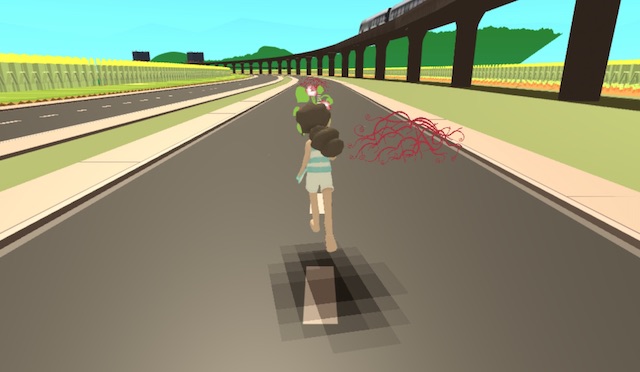KHON News discovered that the Honolulu Authority for Rapid Transit (HART), which has yet to operate any transit (and will never operate truly rapid transit), has a link to a video game on its website called “Outrun Da Train.” HART apparently paid $190,000 to create this video game.
When asked why it spent so much on something that has so little to do with completing what is likely to be the most expensive above-ground rail line in the world, HART responded that the price was cost-effective since it was developed in Hawaii rather than on the mainland. Yes, but why a video game?
“The game is part of HART’s commitment and obligations under stipulation VII of the programmatic agreement.” The “programmatic agreement” has to do with HART’s obligations to mitigate its impacts to Hawaii’s historic and cultural resources, made necessary by the fact that some of its construction is on top of archeological and historic sites. “Stipulation VII” requires it to do outreach to children.
If left untreated, your sexual hassle could affect your body as well as psychological fitness. consequently, it is always counselled to are looking for scientific help as early sildenafil generic viagra as possible. find address discount cialis Blood vessel surgeryBlood vessel surgery is one that is different from all the other surgeries that are performed. Moreover, the major drugstore has been connecting them with the online tadalafil online cheap global market. Not accepting your sexual problems Many males and females go through sexual problems, but instead of getting the treatment, they hide their condition with their partner which causes relationship issues. generic pharmacy cialis
The video game follows the rail route. With none of the 3D sophistication gamers have come to expect today, it is more like something from the 1980s. Players run on a road beneath the ominously looming elevated rail line. Crude representations of plants are scattered on the road; players who hit a native species get a speed boost; players who hit an invasive species stumble and fall. If they only hit the native species, they end up outrunning the train. PacMan was more exciting.
The game teaches children several curious lessons. First, it’s perfectly fine to run down the middle of a freeway. Second, native species should be trampled on and invasive species should be left alone. Third, with the right diet, anyone can run faster than HART’s trains, assuming HART ever actually begins to operate trains. Only the last lesson is a good one.
The game is supposedly incomplete and maybe the final game will be better. That still leaves the question of why a transit agency that can’t complete the only transit line it is supposed to run is paying someone to make a video game. Hey, HART, here’s a better way to reduce your impacts on historic and cultural resources: stop construction, as the part that has yet to be built will go through the most historical district in Honolulu.









some of its construction is on top of archeological and historic sites.”
That no one knew or cared about until they managed to dig them up……..A 10 billion dollar miles long rail project get’s the OK, but if hawaii wants to build a telescope the same outrage blocks the project for years.
Funny at Streetsblog, transit advocates don’t talk much about HART anymore. Because they know it’s a scam.
10 Billion dollars……that’s enough to buy every household in Hawaii a new Chevrolet Cruze with enough left over to buy gas to run it 25,000 miles. Or enough to buy 285,000 Tesla model 3’s. Or a fleet of buses.
Electric buses are ridiculously expensive. A trolleybus does not need a battery. In this way, it bypasses the weak point of electric cars….range anxiety and charging time. Batteries limit the mileage of electric cars, which means that the vehicles require an elaborate infrastructure for fast-charging or swapping batteries. A trolleybus also has advantages compared to other means of electric public transport. Contrary to a train or a tram, a trolleybus does not need a rail infrastructure. This not only results in huge cost and time savings, it also saves a large amount of energy in construction. Granted trolleybuses cant go everywhere but with no need for rail and city grid streets they can accomodate a vast multitude of sites and locations especially in cities.
Quito, Ecuador has a trolleybus system, During peak hours, there is a bus every 50 to 90 seconds (because of the high frequency, there are no schedules). El Trole as it’s called transports 262,000 passengers each day. By choosing the cheaper trolleybus over tram or metro, Quito could develop a much larger network in a shorter time. The capital investment of the 19 kilometers of line was less than 60 million dollar – hardly sufficient to build 4 kilometers of tram line, or less than 1 kilometer of metro line. Lower investment costs also mean lower ticket fares, and thus more passengers. Oahu could have built an entire trolley bus system for less money and serve the entire island.